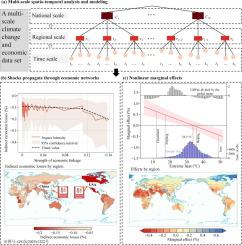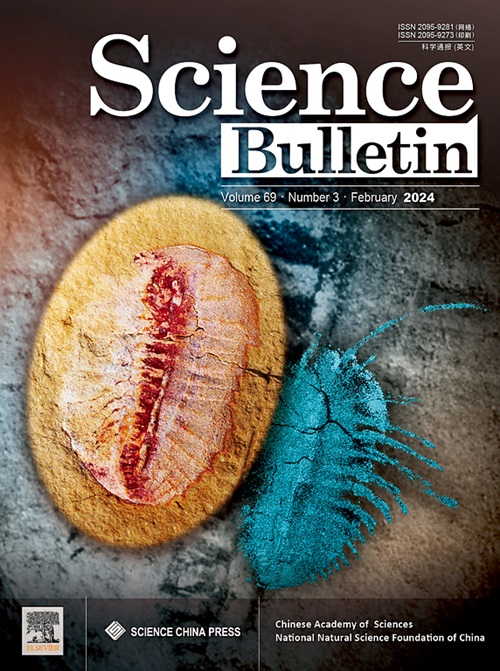Modeling spatial processes of extreme heat impacts on global economy: a multi-scale spatio-temporal approach
IF 21.1
1区 综合性期刊
Q1 MULTIDISCIPLINARY SCIENCES
引用次数: 0
Abstract
Rising frequency, intensity, and geographic scope of extreme heat profoundly impede global sustainable economic development. However, existing climate econometric models are limited in capturing the spatial processes through which extreme heat affects the global economy, often resulting in downward-biased estimates of total economic losses. This study develops a novel multi-scale spatio-temporal model that integrates classic multi-level modeling with spatial statistics, explicitly addressing key challenges faced by climate econometrics. A Bayesian Markov chain Monte Carlo simulation algorithm is derived for model implementation. Using this model, we present the first quantitative assessment of the impacts of extreme heat on global economic production and their scale-dependent spatial processes. Our findings reveal that, at the national scale, economic losses caused by input–output economic linkages initially decline slowly, then drop sharply with increasing connectivity, with an inflection point around 0.1. When accounting for spatial propagation effects, a 1 ℃ increase in extreme heat intensity leads to an average loss of 2.54% [0.90%, 4.19%] of annual GDP per capita—substantially higher than estimates assuming economic losses are locally confined. Moreover, the economic impacts of extreme heat exhibit significant spatial heterogeneity, with positive marginal effects detected in colder regions and negative effects in warmer regions, with a turning point around 33.7 ℃. This study offers a new methodology to evaluate the impact of climate change from a multi-scale and spatial perspective.

极端高温对全球经济影响的空间过程模拟:一个多尺度时空方法。
极端高温的频率、强度和地理范围不断上升,严重阻碍了全球经济的可持续发展。然而,现有的气候计量模型在捕捉极端高温影响全球经济的空间过程方面是有限的,往往导致对总经济损失的估计有向下的偏差。本研究开发了一种新的多尺度时空模型,将经典的多层次建模与空间统计相结合,明确解决了气候计量经济学面临的关键挑战。给出了一种贝叶斯马尔可夫链蒙特卡罗仿真算法。利用该模型,我们首次对极端高温对全球经济生产的影响及其尺度依赖的空间过程进行了定量评估。我们的研究结果表明,在全国范围内,投入产出经济联系造成的经济损失最初缓慢下降,然后随着连通性的增加而急剧下降,拐点在0.1左右。考虑到空间传播效应,极端热强度每增加1℃,将导致人均年GDP的平均损失2.54%[0.90%,4.19%],大大高于假设经济损失仅限于当地的估计。极端高温的经济影响表现出显著的空间异质性,在寒冷地区存在正边际效应,在温暖地区存在负边际效应,在33.7℃左右出现拐点。该研究为从多尺度和空间角度评价气候变化影响提供了一种新的方法。
本文章由计算机程序翻译,如有差异,请以英文原文为准。
求助全文
约1分钟内获得全文
求助全文
来源期刊

Science Bulletin
MULTIDISCIPLINARY SCIENCES-
CiteScore
24.60
自引率
2.10%
发文量
8092
期刊介绍:
Science Bulletin (Sci. Bull., formerly known as Chinese Science Bulletin) is a multidisciplinary academic journal supervised by the Chinese Academy of Sciences (CAS) and co-sponsored by the CAS and the National Natural Science Foundation of China (NSFC). Sci. Bull. is a semi-monthly international journal publishing high-caliber peer-reviewed research on a broad range of natural sciences and high-tech fields on the basis of its originality, scientific significance and whether it is of general interest. In addition, we are committed to serving the scientific community with immediate, authoritative news and valuable insights into upcoming trends around the globe.
 求助内容:
求助内容: 应助结果提醒方式:
应助结果提醒方式:


